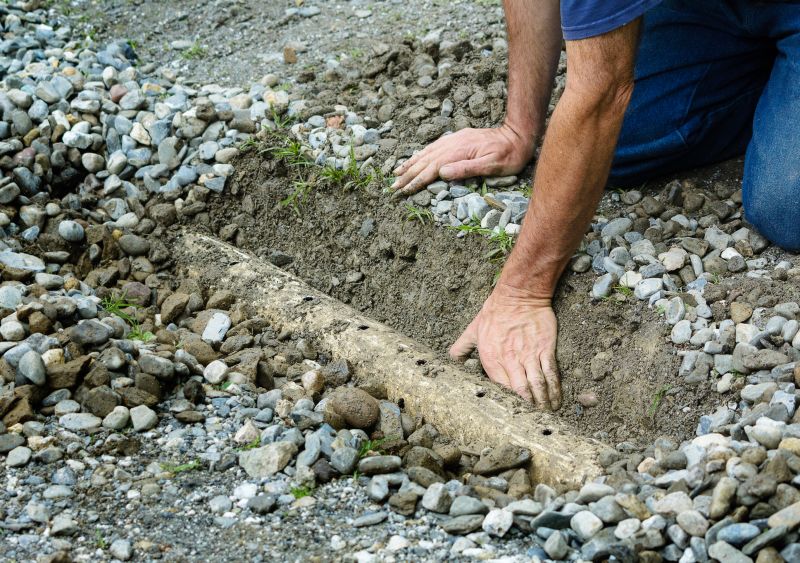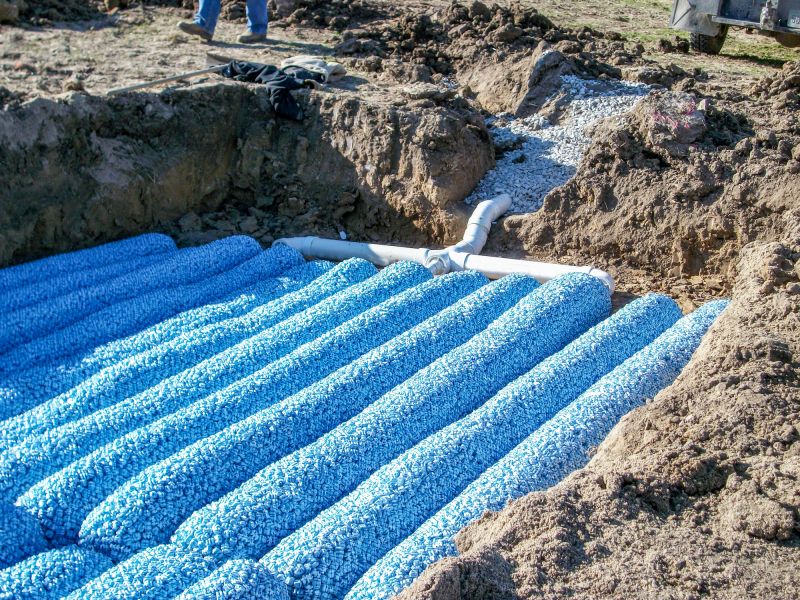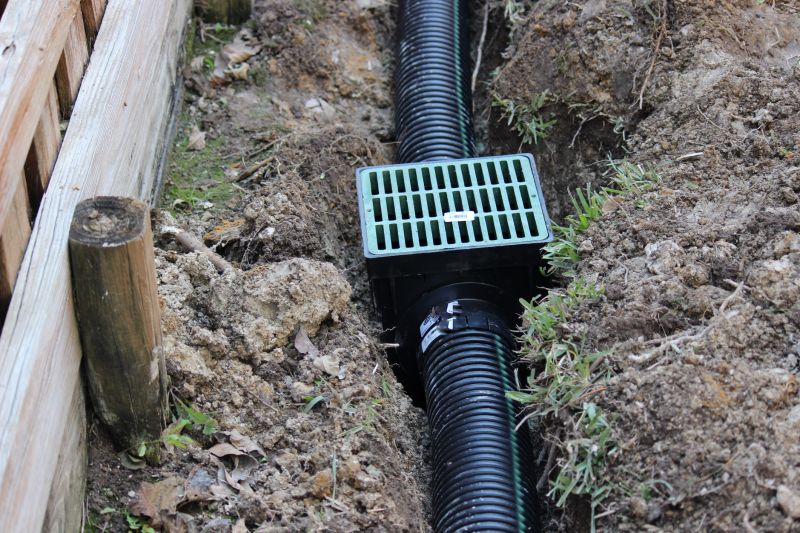Expert Leach Drain Setup for Effective Water Management

Multiple stages are involved in installing a leach drain system, including site assessment, trench excavation, pipe placement, and soil testing to ensure proper drainage.

Specialized trenching equipment, perforated pipes, gravel bedding, and filtration fabrics are used to create an effective leach drain system tailored to site conditions.

Finished installations typically feature neatly covered trenches, with pipes connected to existing drainage infrastructure, demonstrating a professional and durable setup.
Leach drain installations are essential for managing excess groundwater and preventing soil saturation around properties. Properly installed systems improve soil drainage, reduce water pooling, and help maintain the structural integrity of foundations and landscaping. These systems are often used in areas with poor natural drainage or high water tables, ensuring long-term soil health and stability.
The installation process typically involves careful planning to determine optimal trench placement and depth. It requires precise excavation, laying perforated pipes in gravel-filled trenches, and covering with soil and turf. The entire process can vary in duration depending on the size and complexity of the site, but a professional installation generally takes from one to several days.
A professional can complete a standard leach drain system within one to three days, depending on site size and complexity.
Site assessment, trench excavation, pipe installation, soil backfilling, and soil testing are key steps in the process.
Professionals ensure correct placement, optimal drainage performance, and long-lasting results, reducing the risk of future issues.
Use of high-quality perforated pipes, gravel, and filtration fabrics ensures system durability and effectiveness.
Hiring a professional for leach drain installation offers advantages such as adherence to local regulations, proper system design, and reliable execution. Experienced installers can identify site-specific challenges and recommend the most effective solutions, leading to better long-term performance and fewer maintenance concerns.
| Aspect | Details |
|---|---|
| Typical installation time | One to three days |
| Common materials | Perforated pipes, gravel, filtration fabric |
| Site assessment importance | Ensures proper trench placement and system efficiency |
| Soil testing | Verifies drainage capacity and system compatibility |
| Cost factors | Site size, complexity, material quality |
| Long-term benefits | Enhanced soil drainage, foundation protection |
| Professional advantages | Proper design, reliable execution |
Visual evidence of quality installations can be seen in completed systems that feature neatly covered trenches with durable piping and well-compacted soil. These systems are designed to blend seamlessly into the landscape while providing effective drainage solutions that last for years.

A well-installed system with covered trenches and durable piping, demonstrating professional craftsmanship.

Comparison images showing the transformation from excavation to completed drainage system.
Properly installed leach drain systems contribute significantly to soil health and property stability. They are a vital component in managing water flow, preventing erosion, and maintaining structural integrity over time. For those considering a drainage solution, professional installation ensures the system functions effectively and lasts for many years.
To obtain a quote for leach drain installation services, fill out the contact form. Providing detailed site information helps in assessing project scope and delivering accurate estimates tailored to specific needs.
